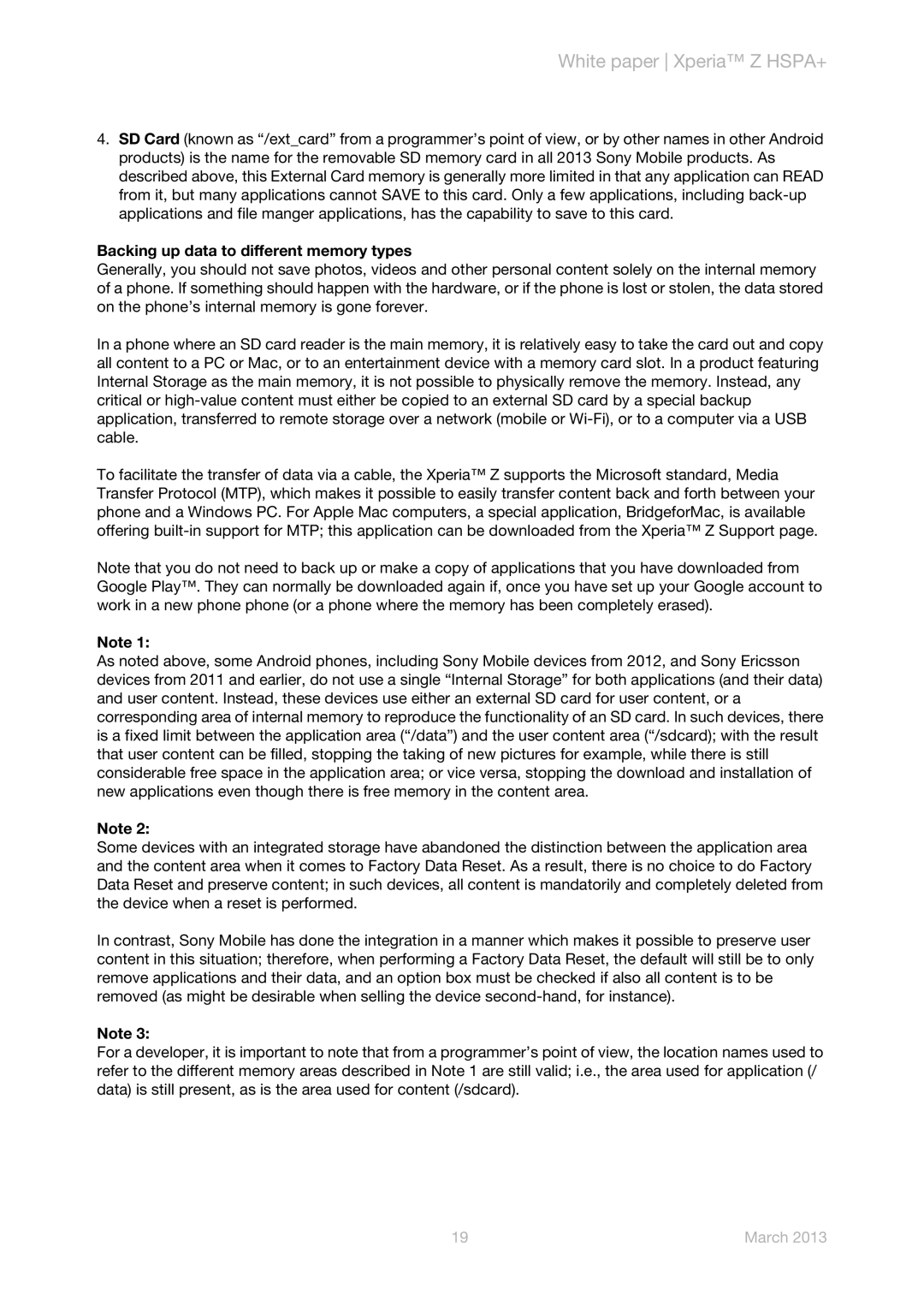White paper Xperia™ Z HSPA+
4.SD Card (known as “/ext_card” from a programmer’s point of view, or by other names in other Android products) is the name for the removable SD memory card in all 2013 Sony Mobile products. As described above, this External Card memory is generally more limited in that any application can READ from it, but many applications cannot SAVE to this card. Only a few applications, including
Backing up data to different memory types
Generally, you should not save photos, videos and other personal content solely on the internal memory of a phone. If something should happen with the hardware, or if the phone is lost or stolen, the data stored on the phone’s internal memory is gone forever.
In a phone where an SD card reader is the main memory, it is relatively easy to take the card out and copy all content to a PC or Mac, or to an entertainment device with a memory card slot. In a product featuring Internal Storage as the main memory, it is not possible to physically remove the memory. Instead, any critical or
To facilitate the transfer of data via a cable, the Xperia™ Z supports the Microsoft standard, Media Transfer Protocol (MTP), which makes it possible to easily transfer content back and forth between your phone and a Windows PC. For Apple Mac computers, a special application, BridgeforMac, is available offering
Note that you do not need to back up or make a copy of applications that you have downloaded from Google Play™. They can normally be downloaded again if, once you have set up your Google account to work in a new phone phone (or a phone where the memory has been completely erased).
Note 1:
As noted above, some Android phones, including Sony Mobile devices from 2012, and Sony Ericsson devices from 2011 and earlier, do not use a single “Internal Storage” for both applications (and their data) and user content. Instead, these devices use either an external SD card for user content, or a corresponding area of internal memory to reproduce the functionality of an SD card. In such devices, there is a fixed limit between the application area (“/data”) and the user content area (“/sdcard); with the result that user content can be filled, stopping the taking of new pictures for example, while there is still considerable free space in the application area; or vice versa, stopping the download and installation of new applications even though there is free memory in the content area.
Note 2:
Some devices with an integrated storage have abandoned the distinction between the application area and the content area when it comes to Factory Data Reset. As a result, there is no choice to do Factory Data Reset and preserve content; in such devices, all content is mandatorily and completely deleted from the device when a reset is performed.
In contrast, Sony Mobile has done the integration in a manner which makes it possible to preserve user content in this situation; therefore, when performing a Factory Data Reset, the default will still be to only remove applications and their data, and an option box must be checked if also all content is to be removed (as might be desirable when selling the device
Note 3:
For a developer, it is important to note that from a programmer’s point of view, the location names used to refer to the different memory areas described in Note 1 are still valid; i.e., the area used for application (/ data) is still present, as is the area used for content (/sdcard).
19 | March 2013 |
